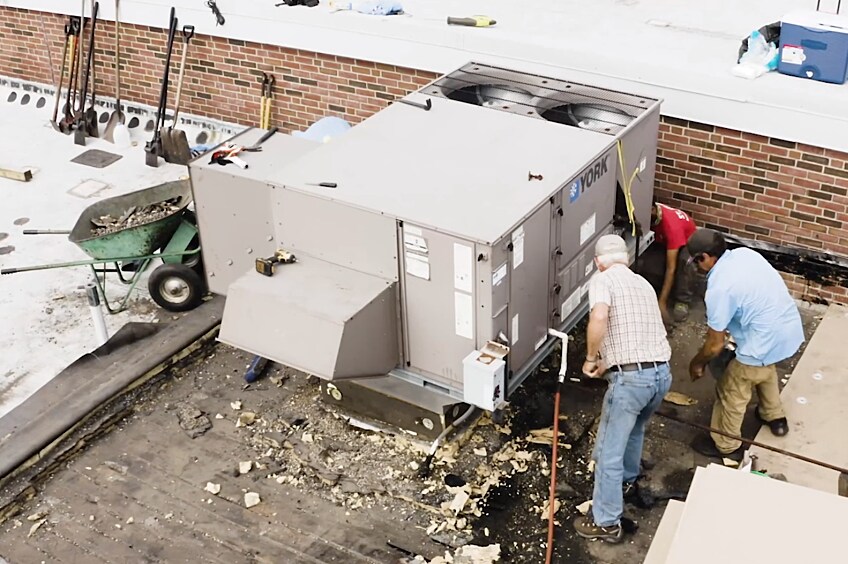You never know what you're going to find on a roof until you start to tear it off. Watch GAF Senior Commercial Training Specialists Dave Scott and Wally Brown (Dave & Wally) as they discover an improper HVAC installation — and see how it can not only jeopardize roof integrity, but also cause delays on a reroof — in Part 7 of the Roofing it Right miniseries on installing a commercial roof, from start to finish.
Watch the full Roof Project from Start to Finish Miniseries.
Commercial Roofing
How an Improper HVAC Installation Can Cause a Roof to Leak
June 29, 2020

This blog contains information created by a variety of sources, including internal and third party writers. The opinions and views expressed do not necessarily represent those of GAF. The content is for informational purposes only. It is not intended to constitute financial, accounting, tax, or legal advice, or professional design advice as to any particular project. GAF does not guarantee the accuracy, reliability, and completeness of the information. In no event shall GAF be held responsible or liable for errors or omissions in the content or for the results, damages or losses caused by or in connection with the use of or reliance on the content. Consult a design professional to ensure the suitability or code compliance of a particular roofing system for any particular structure.
